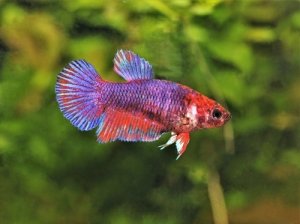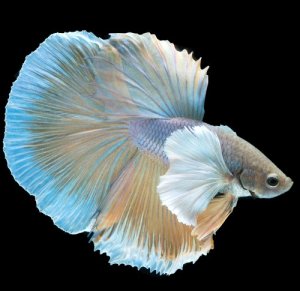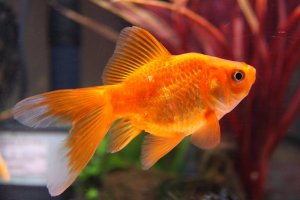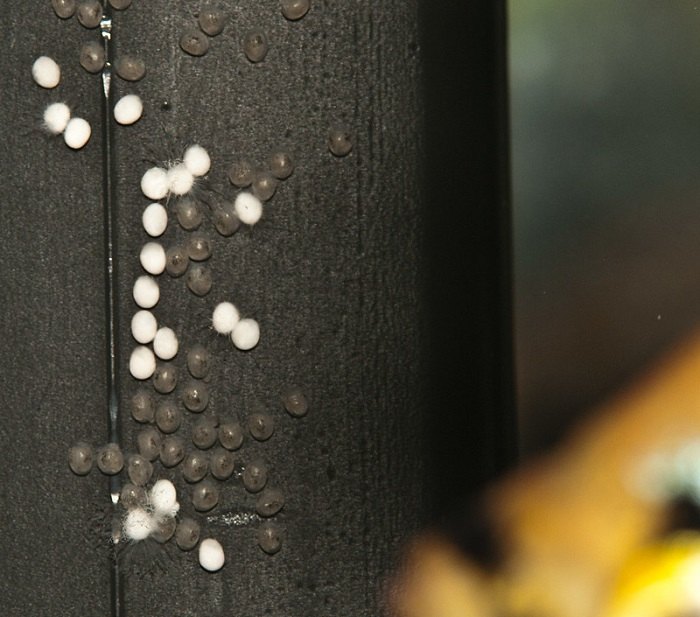
Angelfish are most likely one of the most striking and favored freshwater fish species, by many aquarists and even beginners interested in starting the hobby. As you may already know, Angelfish females can lay eggs regardless if there is a male or not. If you have tried your hand at breeding these Angelic beauties, or have noticed some eggs in your communal tank that are turning white or are initially white, there surely is reason for concern.
However, before getting into Angelfish eggs, here is a closer look at the species and its specific requirements:
Angelfish As A Species
The Angelfish is part of a small genus called Pterophyllum from the Cichlidae family, consisting of three variations, the P. Scalare being more peaceful and easier to breed, and available in the industry, while the P. Altum still peaceful, and the more aggressive P. Leopoldi, being rarer and very hard to breed in captivity.
Angelfish originate in the Amazon and Orinoco basins of South America. They are tropical freshwater fish that prefer clean warm water and they have an omnivorous diet in captivity, but would rather feast on smaller fish and insect larvae in the wild.
Appearance And Colors
An Adult Angelfish will be around 15 cm (6 Inches) in length and 20 cm (8 Inches) in height. They have an oddly shaped body that is laterally compressed and round, with elongated triangular dorsal and anal fins, giving them their angelic appeal, along with their slow-moving nature, and quick burst of energy. They have an incredible lifespan of between 12 and 15 years, however only mature around 6 months of age, and usually retire from breeding at the approximate age of 3 years.
In terms of colors and varieties available in Angelfish, Pterophyllum Scalare is the most domesticated species, noted for its more diamond-shaped bodies and taller fins that are highly attractive.
The Most Common color is Silver with three vertical stripes across the body. After which you have the Silver Zebra with more stripes, the Zebra Lace, and the Blue Zebra Variant. Different color categories such as the Ghost, Lace, and Marbled versions come in colors such as Black, Silver, Gold, Yellow, orange, and Blue. The Pearl scale is similarly a stunning species with shimmering white scales.
Caring For Angelfish
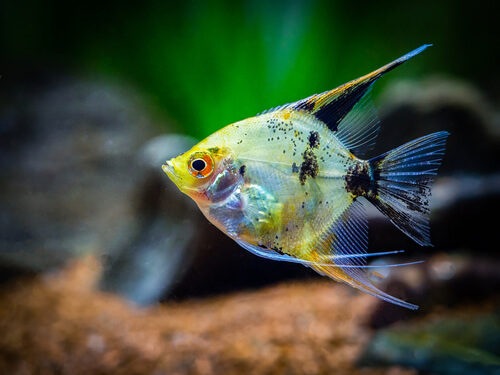
Going over a few main aspects of caring for Angelfish before going further into breeding and Angelfish Eggs will give better insight into “Why your angelfish eggs are Turning White”. This proves that much of how you care for them pertains to the quality of their eggs, thus this is an important criterion. It’s also recommended to read through a trusted source or care guide for Angelfish.
- Aquarium And Water Parameters – Water temperatures of approximately 78 to 80 degrees Fahrenheit (25 to 27 degrees Celsius) are suitable for a regular communal tank or aquarium to keep Angelfish, though higher temperatures of around 80 to 85 degrees Fahrenheit (27 to 30 degrees Celsius) are required in breeding tanks and for Eggs to stay healthy. Water in your breeding tanks should be kept well-oxygenated and clean with regular water changes every three days, whereas weekly water changes are required for communal tanks. A pH of 65 –7.5 is suitable for regular and communal aquariums. Other than that, a medium or fine gravel substrate is ideal, with caves or terracotta pots as hiding spaces, and rocks and driftwood as décor. You can similarly use live or synthetic plants. Live plants are more beneficial though as they help to keep the water clean and have nutritional value. Long-stemmed and floating live plants create the perfect environment for spawning and young fry to hide. Keep in mind you will need a substrate such as a broad leaf, slate, or piece of terracotta pot for Angelfish to lay their eggs on if you want to breed.
- Feeding – Angelfish are omnivores and require two feedings a day with both quality fish flakes or pellets and meat-based foods and vegetables. Meat-based foods can include; Brine Shrimp, Bloodworms, Tubifex worms, Daphnia, and Insect Larvae. A variety of vegetables such as spinach, zucchini, carrots, cucumbers, and broccoli can be given in small amounts, just ensure they are blanched, cooled, and shredded. Similarly, ground beef and egg yolks are sometimes given, though take care as these foods can quickly affect the water quality. During the spawning season, it is advised to feed a high-protein diet three times a day to encourage breeding.
- Behavior And Compatibility – Contrary to their name, Angelfish can be big bullies, and may terrorize other fish, and eat any fish small enough to fit in their mouth. According to research, I have found that they are quite volatile in temperament, with some being peaceful, and others highly aggressive, though they are rated as semi-aggressive. Ideally, they are surface dwellers, thus larger bottom-feeding fish should be safe, and some similar-sized species should be more peaceful. Fin Nippers such as Tiger Barbs are to be avoided as Angelfish have long fins. Thus, according to resources, the best tank mates of other species are:
-
- Boesemani Rainbow Fish
- Corydoras Catfish
- Dwarf Gouramis
- Platies
- Bushy Nose Plecos
- Zebra Loaches
- Mollies
- Ram Cichlids
Though, to be clear, do your research on the specific species first, if you want to try your hand at breeding your Angelfish in the communal tank, as some of these species will eat the eggs and fry of other fish, especially Platies.
Breeding
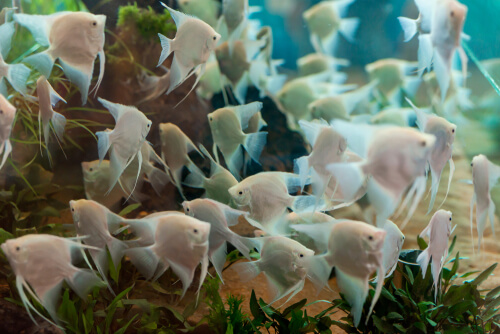
Ideally, there are three methods of breeding Angelfish each with its pros and cons:
- You can breed your Angelfish in their initial communal, or Angelfish-only tank. Angelfish are known to pair up with a single partner for life, and to care for their partner, becoming more territorial, and requiring their own space. Though more mature pairs that have bred before will protect their eggs and fry until they mature, new parents may become stressed, or hungry and eat their fry. In communal tanks with other species, you similarly stand the risk of having young fry or eggs eaten.
- Separating your Angelfish in a breeding tank is one of the most ideal methods if the Angelfish themselves do not tend to eat their eggs or fry. As mentioned in the Care section, a breeding pair can be kept in a well-set-up breeding tank throughout the entire cycle from spawning to egg and fry care. You may notice parents taking turns aerating the eggs with their fins to increase oxygen levels.
- The last option is relatively risky and should be done with extreme care. You can allow your breeding pair to lay their eggs, after which you can remove the eggs with the substrate they are laid upon, preferably, and transfer them to the breeding tank. Care needs to be taken to acclimate them, thus you may initially need to increase the aquarium temperatures of your communal tank during spawning first or acclimate your eggs in a separate container with similar temperatures, lowering it sequentially. As said this is a tricky method, as many times eggs get damaged, cold, or an infection just from the transfer process.
Mating And Breeding Process
Angelfish around six months of age will form genital papillae situated just before the anal fin. The male has a longer and sharper-shaped tube, while the female has a shorter, more rounded almost cylindrical tube, which ideally is the best method of telling their gender.
As said, they will form a pair and move off to their territory, where they will care for each other. The female will eventually start laying eggs, between 120 and over 1000 eggs, and the male will hover over them releasing sperm to fertilize them.
They take turns caring for the eggs, until the fry are born between 4 – 5 days and will feed on their attached yolk sacs for another 2 – 4 days, before swimming away. Young fry will initially hide between plants and small rocks and can be fed a protein-rich diet of baby brine shrimp, and crushed fish flakes.
In captivity, parental care will last around 8 weeks when young fry will become stronger and more independent fending for themselves.
The reproduction of Angelfish is both intricate and amusing, not to mention relatively easy that is why many individuals strive to breed their Angels.
One of the most common issues with breeding Angelfish is the Eggs Turning White, which is a complaint among many aquarists, especially beginners.
Crucial in Angelfish breeding is the color factor of the eggs, which indicates their condition, and which are usually affected by water parameters and temperatures which will be discussed further.
What Colors Should Angelfish Eggs Be?
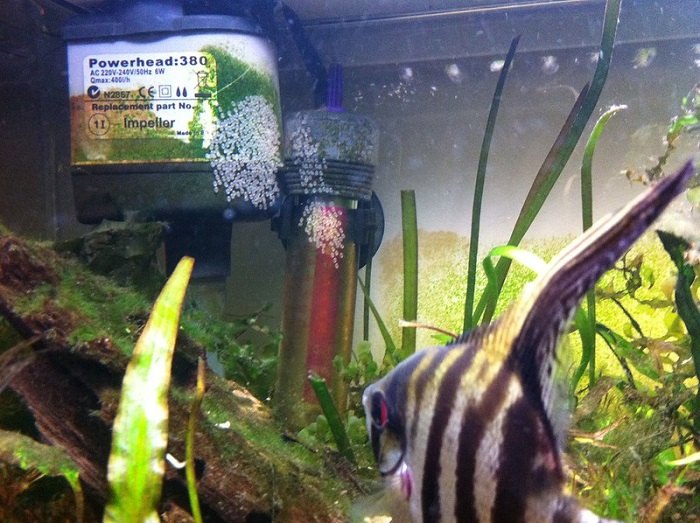
The color of the eggs of your Angelfish will give you a certain indication about their health, and whether you have properly fertilized eggs, as well as how close they are to hatching. Thus, color matters in terms of Angelfish eggs.
Ideally, normal Angelfish eggs will start almost translucent, ranging to a more subdued yellow, amber color, or brownish color. Keep in mind the color is just a tinge, and the eggs must remain more translucent, meaning they are healthy and fertilized.
The following colors may point to some discrepancies in your Angelfish Eggs that you need to be concerned about:
- Medium to Darker Solid Brown – Brown eggs normally have a bacterial infection that will need to be treated.
- Green – Algae growing inside, on, or around your eggs may cause them to appear green in color.
- Red/ brown Spotting – In this case there was physical damage to the eggs causing blood spotting, which usually occurs as a result of transferring, or handling the eggs.
- White or Opaque – The eggs are essentially Unfertilized.
- White or Cloudy with a Fuzzy Appearance – The eggs have a fungal infestation that will spread and eventually not hatch at all.
With this in mind, let’s move further to our main question “Why Are My Angelfish Eggs Turning White?”:
Reasons Why Angelfish Eggs Are Turning White
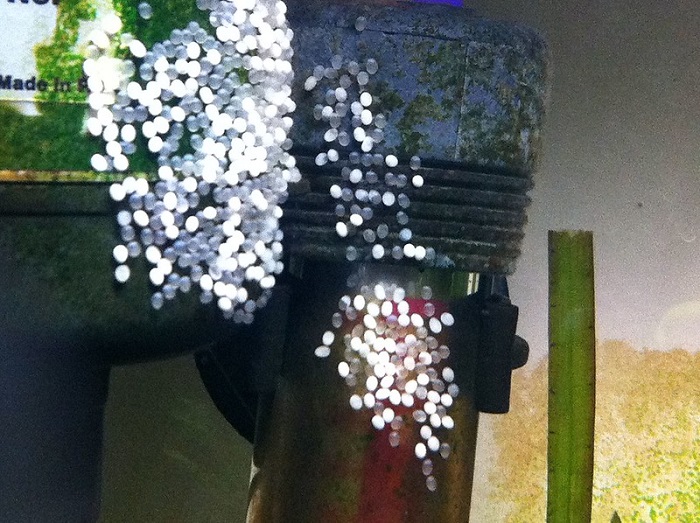
Unless your Angelfish eggs have a smooth or more opaque white color, in which case they are just unfertilized, they may have a fungal infection that is relatively serious.
Angelfish eggs with a fungal infection will have a cloudier white color with a fuzzy texture that will usually start affecting one egg or more at a time and spread to the rest of the eggs. Keep in mind both fertilized and mostly unfertilized eggs develop a fungal infection.
- Appearance – Fungus grows out of the shell of the egg and into the water column, it creates what is called a hyphae network that covers the surface of your Angelfish egg with a white, fuzzy, mold-like substance.
- Direct Cause – A fungal infection in fish eggs is caused by the fungus referred to as Saprolegnia, a filamentous fungus growing on organic materials, and fish eggs in your aquarium. It is naturally already present in most aquariums, however only becomes an issue when poor weather conditions create a favorable environment for them to grow, along with an organic substance, preferably fish eggs.
On the other hand, you may likely have unfertilized eggs, with a fungal infection, so here are some ways to prevent both situations.
How To Prevent Whitening In Angelfish Eggs
There are a few steps you can take to ensure your Angelfish eggs are properly fertilized and to prevent fungal infections from developing.
How To Prevent Unfertilized Eggs
- Keep your breeding tank, or initial tank in an area in your home with low traffic. Male Angelfish can become nervous and skittish, rather hiding away, than courting a female or fertilizing his mate’s eggs. Angelfish need privacy to breed and prefer not to be disturbed by other pets or humans during spawning, respectfully.
- Other species of tank mates may try to eat the eggs before they are fertilized. The stress added to the male Angelfish having to consistently protect its territory and eggs will most likely interfere with the fertilization of the eggs. All so much, the reason why many breeders, especially professionals, prefer a separate breeding tank for their Angelfish where they can spawn at peace and similarly care for their eggs and fry, without having to fend off other fish.
- Hefty currents and fast-moving water may likewise cause unfertilized eggs, as the fast current can wash away the sperm, instead of allowing them to stick to the eggs. Thus, try and keep your breeding substrate on the opposite side of your filter, or out of strong currents.
- Poor nutrition in Angelfish could affect their eagerness to breed. Feeding a high protein diet at least 3 times a day can help to induce spawning, and ensure healthy strong sperm.
Preventing Fungal Infestations
- Dirty water and high levels of ammonia or nitrites are some of the most common causes of fungal infestations in your tank, and your Angelfish eggs becoming infected. Waste materials from other fish, leftover food from offering to feed, and decaying plant matter all add up to poor water conditions in your tank. Thus, more regular water changes and cleaning will be necessary, especially to prevent fungal infections in your Angelfish Eggs.
- Fungus likes to grow in more alkaline water conditions, where you have higher pH levels. In more acidic environments fungi cannot thrive, though you will still need to keep a very balanced pH for the health of your fish. Use a proper testing kit and try some chemical water enhancers to keep the pH levels in check.
- To treat eggs that have been affected by fungus, it is advised to first ensure clean, and pristine water conditions. Then you can add chemicals such as methylene blue, hydrogen peroxide, potassium permanganate, iodine, acriflavine, or rosemary extract, to get rid of the infestation. You may unfortunately need to discard infected eggs as they will most likely not be able to survive.
Tips For Creating A Healthy Breeding Environment
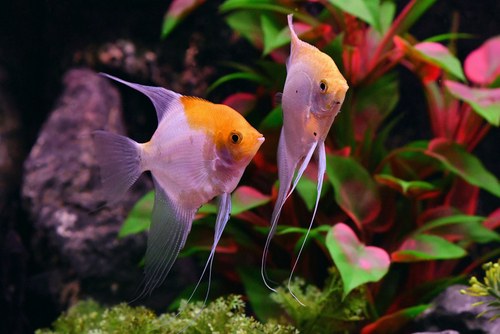
Breeding your Angelfish, and watching the small fry develop into exquisite adults can be rewarding, and thoroughly amusing. Though it can be frustrating when your Angelfish eggs do not hatch, and when the fry struggles to survive, so if you find your eggs and hatchlings have a very low survival rate, you may want to try these tips from trusted sources, to improve their chances.
- Pairing – Angelfish choose their mates and bond for life; a widow or widower Angelfish may choose never to take another mate again. Ensure that your pair is ideally bonded and healthy.
- Invest in a Breeding Tank – Rather than create a separate breeding tank for spawning and your Angelfish parents to raise their fry, most Angelfish only eat their fry or eggs during the first breeding, and will eventually become nurturing parents. However, there is always an exception to the rule, in which case you will need to remove the eggs to a separate breeding tank and care for them yourself.
- Water Conditions – Angelfish need warmer, soft water with a well-balanced pH to breed, and for eggs to stay healthy. Temperatures between 80 to 85 degrees Fahrenheit (27 to 30 degrees Celsius) are ideal.
- Hiding Sports – Ensure that there are enough hiding spaces, and plants for young fry to hide, and to keep the tank dimmer.
- Substrate – You will need substrate for the tank, and the eggs to attach to. You can use slate, a large leafed plant, or a piece of the terracotta pot.
- Diet – Your male and female Angelfish require a high-protein diet to remain active and healthy when breeding. Feed them ample high protein, and meat-based foods three times a day.
- Remove Unfertilized Eggs – Any white or unfertilized eggs need to be removed immediately to prevent bacterial growth that can affect other eggs.
In Conclusion
Thus, as now confirmed there are mainly two reasons why your Angelfish eggs are turning white, they are either unfertilized or have a fungal infection. By following the above-mentioned tips and preventative measures you should be able to successfully breed your Angelfish and have a much higher survival rate for the eggs and fry.


